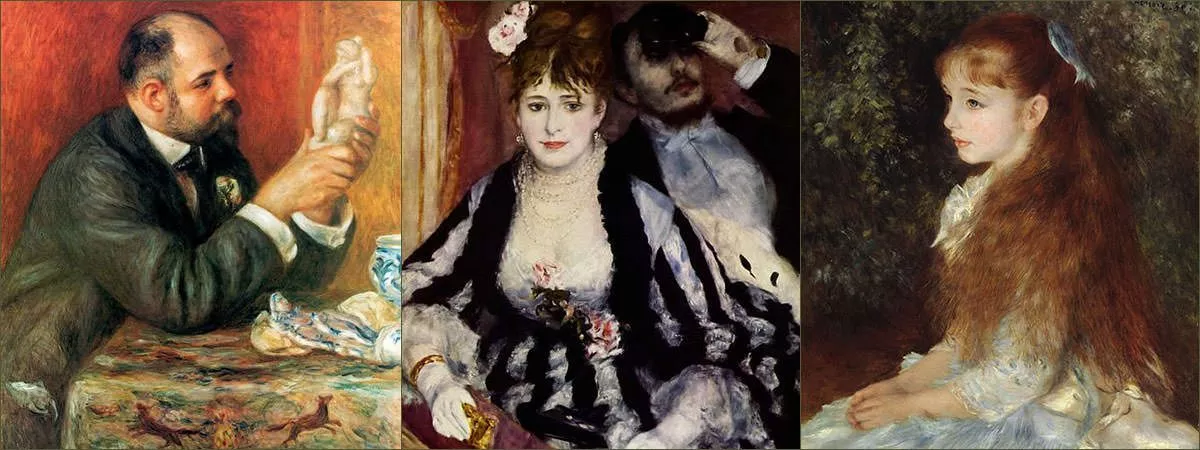Among the Impressionists, Pierre-Auguste Renoir (February 25, 1841 – December 3, 1919) was the only artist to earn distinction as a portrait painter. He explored the genre of portraiture throughout his career, which lasted for more than 50 years. Renoir is known for being one of the founders of the art movement Impressionism in late 1860s. He executed several portraits in the Impressionist style including La Loge and A Girl with a Watering Can. His portrait Madame Georges Charpentier and her Children was a resounding success at the 1879 Salon. It was a turning point in his career leading to further commissions which in turn provided him financial stability. Renoir changed his style after his 1881–82 trip to Italy. He broke away from Impressionism and began applying a more formal and disciplined technique to his portraits. This change of style can be seen in his 1883 portrait By the Seashore. Know more about Renoir, the portrait artist, though his 7 best paintings in the genre.
#1 La Parisienne
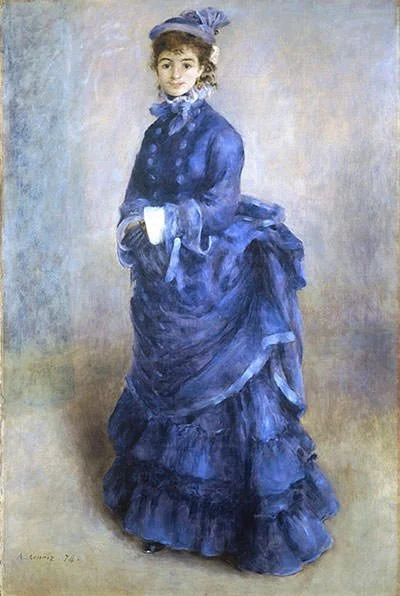
| Location: | National Museum Cardiff, Wales |
| English Title: | The Parisian |
| Year: | 1874 |
The model for this portrait is Henriette Henriot, an actress at the Odéon theater. Also known as the Blue Lady due to the striking blue color used for the dress, the painting was first exhibited at the first Impressionist exhibition in 1874 along with 6 other works by Renoir. It was described as a failure by critics with one referring to the shoe of the model as a little black mouse. But now it is among Pierre-Auguste Renoir’s most acclaimed paintings. Since becoming part of the collection of the National Museum of Wales in 1952, La Parisienne is one of the most iconic and popular exhibits of the museum.
#2 La Loge
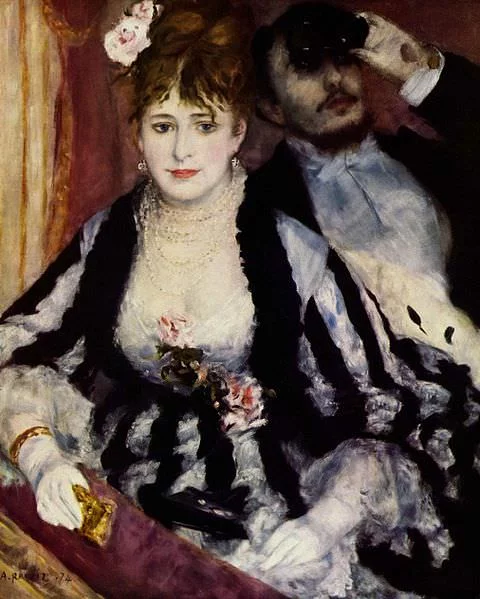
| Location: | The Courtauld Gallery, London |
| English Title: | The Theater Box |
| Year: | 1874 |
This painting was Pierre-Auguste Renoir’s main exhibit at the first Impressionist exhibition in April 1874. It depicts a fashionable couple seated in the best seats at the theater. Like many Impressionists, Renoir uses the theater to capture the changing nature of fashionable Parisian society but he also adds mystery through his narrative. The elegantly dressed woman has lowered her opera glasses possibly to reveal herself to admirers in the theater while her companion raises his binoculars presumably to get a closer look at a beautiful woman. La Loge is regarded as one of the early masterpieces of Impressionism.
#3 A Girl with a Watering Can
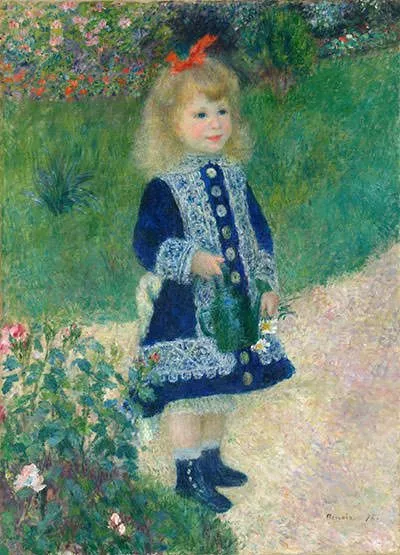
| Location: | National Gallery of Art, Washington, D.C., USA |
| French Title: | La Petite Fille à L’arrosoir |
| Year: | 1876 |
Though not known with certainty, it is believed that this painting was created in Claude Monet’s famous garden at Argenteuil. The identity of the girl is also not known. She is perhaps one of the girls in Renoir’s neighborhood. The portrait has been executed in a mature impressionist style. The colors used reflect the radiance of the Impressionist palette while the brushstrokes have been applied in delicate touches. Also, in keeping with the practice of the Impressionists, the work has been created en plein-air (“open air”), the practice of painting outdoors to capture the effects of light and atmosphere.
#4 Madame Georges Charpentier and her Children
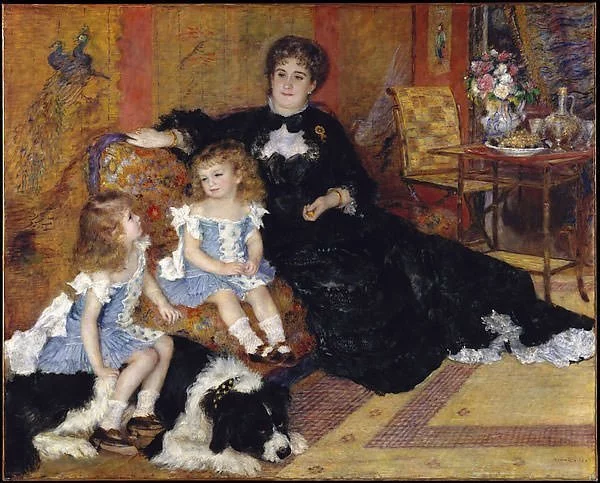
| Location: | Metropolitan Museum of Art, New York City, USA |
| French Title: | Madame Charpentier et ses Enfants |
| Year: | 1878 |
Madame Charpentier was an influential woman who took interest in the Impressionists, particularly in Renoir. The artists created several portraits for the Charpentiers, among which this is the best known. It portrays Madame Charpentier along with her daughter, Georgette-Berthe, and son, Paul-Émile-Charles. The portrait was hung at a prominent location in the 1879 Salon and was well received by most. It was a turning point in the career of Renoir as it led to further commissions and made him financially successful. Madame Georges Charpentier and her Children continues to be regarded as one of the best portraits created by Renoir.
#5 Portrait of Irène Cahen d’Anvers
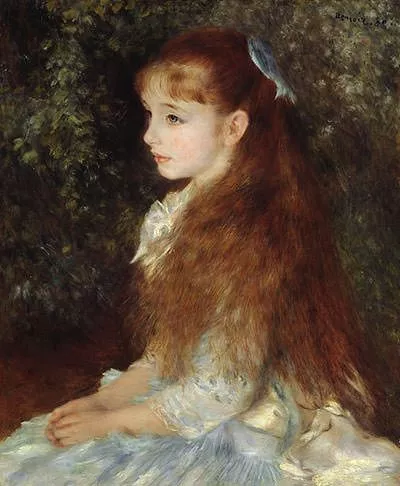
| Location: | Foundation E. G. Bührle, Zürich, Switzerland |
| French Title: | Portrait de Mademoiselle Irene Cahen d’Anvers |
| Year: | 1880 |
The Cahen d’Anvers family was one of the wealthiest Jewish banking families in Paris. Louis Cahen d’Anvers commissioned Renoir to paint portraits of his three daughters, the eldest of which was Irene at 8 years of age. The other two daughters have been captured in a different painting now known as Pink and Blue. Upon completion of the work, Louis was so dissatisfied with it that he hung it in his servant’s quarters. The painting was stolen by the Nazis during the Second World War and, in 1946, exhibited in Paris as one of the “French masterpieces found in Germany”. Also known as The Little Girl with the Blue Ribbon, the portrait is now regarded as one of the best executed works of Pierre-Auguste Renoir.
#6 By the Seashore
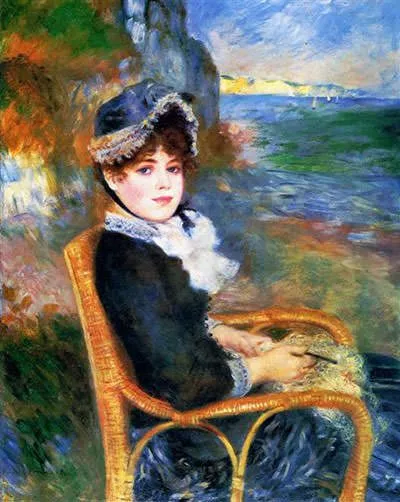
| Location: | Metropolitan Museum of Art, New York City, USA |
| French Title: | Au Bord de La Mer |
| Year: | 1883 |
Renoir was inspired by Renaissance art during his 1881–82 trip to Italy. This led to a major change in his style, which became different from his earlier Impressionist approach. This is clearly evident in this portrait from the carefully drawn features of the face of the subject. The free strokes used in the background are however reminiscent of his earlier Impressionist style. The painting was created in his studio and not en plein-air. Renoir used the studies he had made on the Normandy coast to furnish the beach scene. The model in the painting is Aline Charigot, who was Renoir’s girlfriend at the time. The two later married and had three children together.
#7 Portrait of Ambroise Vollard
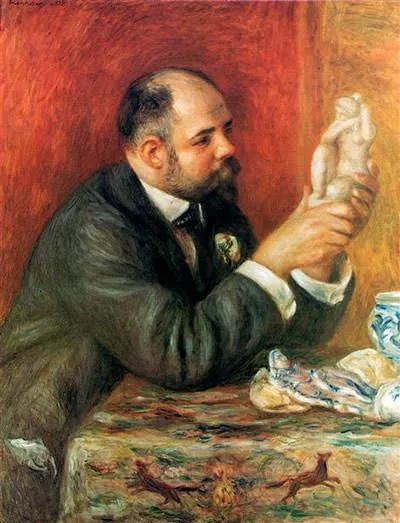
| Location: | The Courtauld Gallery, London, England |
| French Title: | Portrait d’Ambroise Vollard |
| Year: | 1908 |
Ambroise Vollard was a businessman who was one of the main art dealers in early 20th century. He was a friend of Renoir and a supporter of his art in the later stages of his career. Renoir celebrated their friendship by creating several portraits of Vollard in different guises. In this portrait, Renoir depicts him examining a classical statuette of a female nude showing him as an appreciator of beauty and art. The painting shows the progress of Renoir as a portrait artist who experimented with various styles throughout his career. It is among his best works in the later stages of his career.

